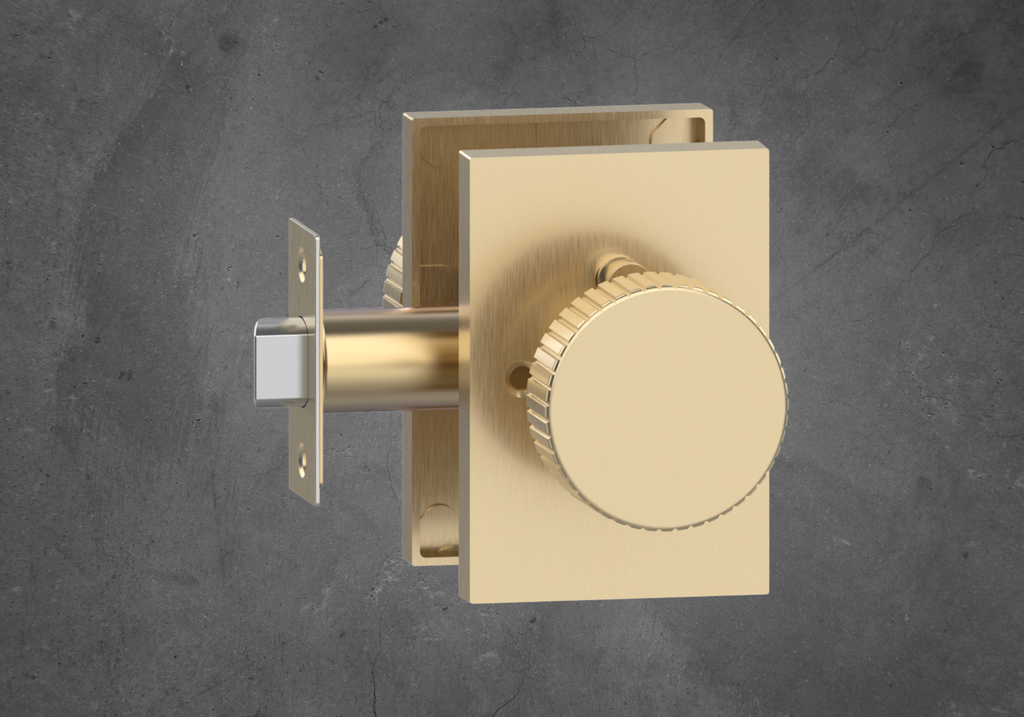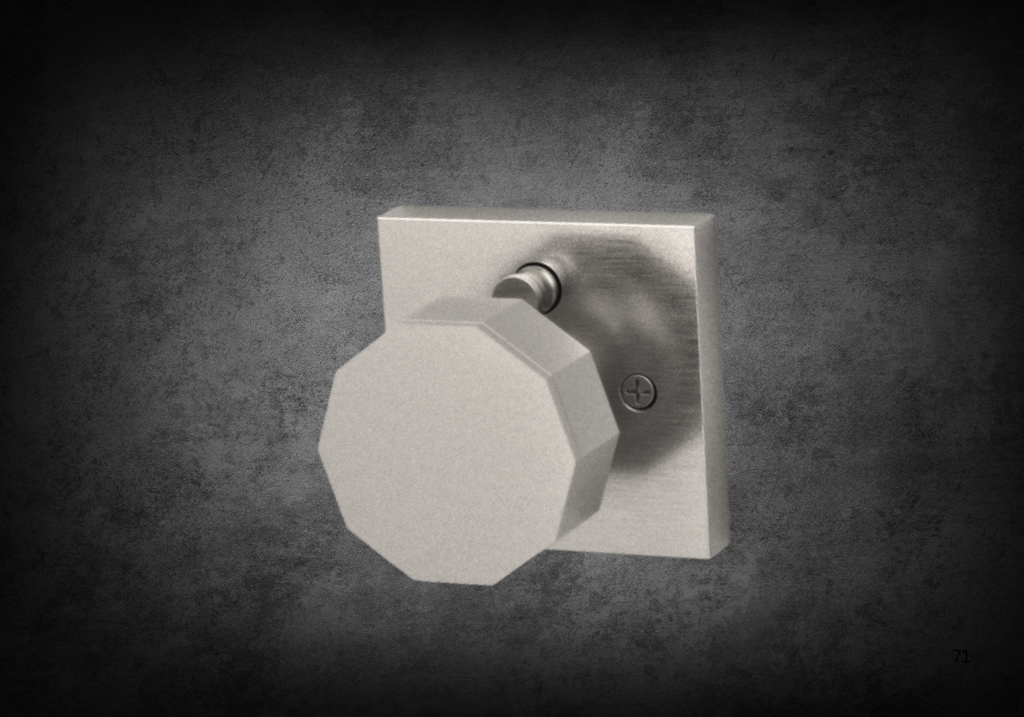Minimalist Hardware Trends for Kitchens & Bathrooms: What’s In and What’s Out in 2025
Minimalism has been influencing interior design for decades, but in 2025 it reaches a more refined stage, especially in kitchens and bathrooms. The shift is not only aesthetic but also functional, as homeowners want hardware that delivers durability, convenience, and sustainability while maintaining a sleek look. Minimalist kitchen hardware trends now embrace simplicity with character, using form, finish, and material as subtle yet powerful design elements. Handles, pulls, and faucets are no longer just utility pieces; they are carefully selected details that unify an entire space.
Kitchens are transitioning toward more integrated hardware solutions, where cabinetry features slim, almost invisible pulls or push-to-open systems. Bathrooms, on the other hand, highlight streamlined faucets and towel bars that emphasize geometry and proportion. The removal of unnecessary ornamentation allows natural textures and intentional finishes to become the focal points. This shift marks a departure from the oversized or highly decorative hardware popular in the past decade, setting the tone for the future of home design.
Minimalist Kitchen Hardware Trends in 2025
Minimalist kitchen hardware trends reflect a growing desire for harmony between appliances, cabinetry, and fixtures. Matte black and brushed nickel finishes continue to dominate, but 2025 also brings warmer metallics like champagne bronze and muted brass. Unlike the glossy gold finishes of recent years, these tones add warmth without overpowering the clean lines of modern cabinetry.
Pull bars and cabinet handles are becoming slimmer and more ergonomic, blending seamlessly into the furniture. Many homeowners are gravitating toward handleless cabinets, relying on recessed grips or touch-latch systems for a truly uninterrupted look. This creates a streamlined aesthetic where hardware enhances rather than interrupts the kitchen’s visual flow.
The integration of smart technology is also influencing minimalist hardware choices. Induction stovetops with touch controls, hidden dishwashers with panel-ready fronts, and even smart faucets with discreet sensors fit naturally into this trend. The minimalist kitchen of 2025 is not just about appearance; it’s about merging functionality with subtle sophistication.
Sustainability is another defining factor. Designers are focusing on sustainable hardware materials like recycled aluminum, reclaimed wood accents, and low-impact steel finishes. By choosing hardware crafted from eco-conscious sources, homeowners not only reduce their environmental footprint but also invest in long-lasting pieces that won’t need frequent replacement.
2025 Bathroom Hardware Trends
When it comes to bathrooms, 2025 bathroom hardware trends are steering toward a spa-like aesthetic. Faucets, showerheads, and drawer pulls all follow minimalist guidelines while prioritizing user comfort. Geometric forms dominate, with cylindrical and angular faucets replacing ornate designs. This is particularly evident in modern vs minimalist faucet design, where the preference is shifting toward simple, functional silhouettes that create a sense of calm.
Finishes are softer in bathrooms than in kitchens. Brushed stainless steel, matte black, and muted bronze continue to trend, but one new standout is matte white hardware, which pairs beautifully with natural stone and wood vanities. This emerging trend contributes to a serene, clean environment reminiscent of wellness retreats.
Hardware placement is also evolving. Instead of traditional towel bars, more homeowners are choosing minimalist hooks or floating racks that double as sculptural features. Shower hardware follows the same principle, with flush-mounted fixtures that appear as extensions of the wall.
Sustainability continues to play an important role here as well. Many bathroom fixtures are being made from sustainable hardware materials that resist corrosion and reduce water waste. Eco-friendly faucet aerators and low-flow showerheads are no longer considered compromises; they’re integrated into the design as must-have features for environmentally conscious households.
Modern vs Minimalist Faucet Design
The distinction between modern and minimalist faucet design is subtle but impactful. Modern faucets often prioritize bold aesthetics, with sweeping curves, intricate detailing, or mixed finishes. They make a statement and are intended to stand out. Minimalist faucets, on the other hand, focus on restraint, emphasizing simplicity in both form and function.
In kitchens, minimalist faucets in 2025 are characterized by thin spouts, single-lever handles, and discreet pull-down features. They merge effortlessly with clean-lined sinks and countertops, ensuring that they do not dominate the space. Unlike modern faucets that may feature contrasting finishes or decorative elements, minimalist options rely on balance and proportion for visual appeal.
In bathrooms, the comparison is equally clear. Modern faucets may feature sculptural designs that serve as focal points, whereas minimalist versions integrate seamlessly into the vanity without drawing too much attention. Their beauty lies in their understated elegance, proving that restraint can be as powerful as embellishment.
Minimalist faucet design also aligns with technology-driven improvements. Touchless operation, integrated water filtration, and temperature control features are being embedded into sleek forms. The absence of visual clutter enhances usability, reflecting the broader philosophy of functional simplicity.
Sustainable Hardware Materials Defining the Future
A defining feature of minimalist hardware trends in 2025 is the embrace of sustainable hardware materials. As homeowners become more eco-conscious, demand for responsibly sourced finishes and components has surged. Designers are answering with innovative materials that balance durability with environmental responsibility.
Recycled metals like brass and aluminum are increasingly common, offering strength without the resource-heavy production of virgin materials. Bamboo and reclaimed wood are being used for drawer pulls and accents, lending natural warmth to otherwise sleek designs. Stainless steel with low-VOC coatings ensures long life and reduced environmental impact.
Powder-coated finishes are gaining favor because they are more eco-friendly than traditional plating processes, producing less waste and requiring fewer harsh chemicals. These finishes are also highly durable, extending the lifespan of the hardware. This emphasis on longevity underscores the minimalist principle of quality over quantity.
Beyond the materials themselves, production methods are evolving. Many brands are adopting closed-loop manufacturing systems, reducing emissions and recycling waste from the production process. This aligns with the growing cultural movement that views sustainability not just as an option, but as a necessity in home design.
What’s Out in 2025
While minimalist hardware trends are gaining traction, several outdated styles are being phased out in 2025. Overly ornate handles with intricate patterns are being replaced by sleek, geometric designs. Shiny chrome, once a staple in kitchens and bathrooms, is losing favor to softer finishes that provide warmth without glare. Large, oversized cabinet pulls that dominate a space are also falling out of style, as more homeowners embrace slim profiles or completely handle-free cabinetry.
In bathrooms, vessel sinks paired with decorative faucets are becoming less popular, replaced by under-mount sinks and streamlined fixtures that contribute to a cohesive, minimalist environment. The trend of mixing multiple bold finishes in one space is also fading, as homeowners gravitate toward uniformity and simplicity in design.
Sustainability is influencing what’s out as well. Hardware made from non-recyclable plastics or finishes with high environmental costs are being abandoned in favor of greener alternatives. This shift ensures that the hardware trends of 2025 not only look appealing but also support a more responsible lifestyle.
Conclusion
Minimalist hardware in 2025 is defined by its ability to balance form, function, and sustainability. Kitchens are embracing hidden hardware, slim profiles, and warm metallic finishes that elevate simplicity. Bathrooms are adopting spa-inspired designs with minimalist faucets, matte finishes, and sculptural yet functional hardware. The debate of modern vs minimalist faucet design highlights the growing preference for restrained, functional aesthetics over bold statements. Sustainable hardware materials are central to this shift, ensuring that design choices contribute positively to the environment.
What’s out in 2025 are the ornate, oversized, and unsustainable options that once dominated. In their place, homeowners are choosing long-lasting, eco-conscious, and quietly beautiful designs. The future of kitchens and bathrooms lies not in flashy ornamentation but in the thoughtful integration of minimalist principles that prioritize both the planet and the people who inhabit these spaces.
Need Finishing Touches That Inspire?
At Knobhill, we take pride in being more than just a source for fine home essentials; we’re your partner in bringing elegance to life. If you’re ready to transform your space with timeless, thoughtfully curated designs that reflect your unique vision, we’d love to hear from you. Reach out to us today and let’s explore how we can help elevate your home with the perfect balance of beauty and craftsmanship. Because every detail should make a statement, your statement.















